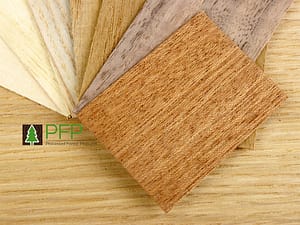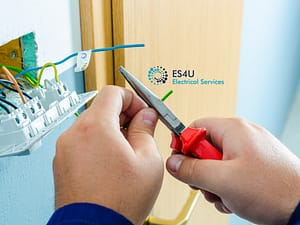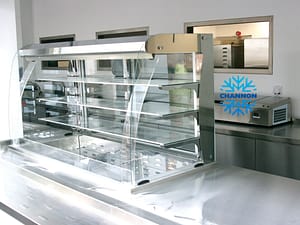Waterproofing is a key part of any bathroom renovation. It helps stop water damage, keeps fixtures and finishes in good shape, and protects your home’s structure. With proper waterproofing, you can avoid expensive repairs and enjoy a safe, functional, and stylish bathroom.
Why Waterproofing is Important in Bathrooms
Water damage is a common problem in bathrooms. In fact, without good waterproofing, water can easily leak into walls, floors, and ceilings, leading to serious damage and, eventually, even mould growth. This is exactly why waterproofing is a must:
- Stops Leaks: Proper waterproofing effectively keeps water in the right places and, therefore, stops leaks that can lead to long-term damage.
- Prevents Mould and Mildew: By blocking moisture, waterproofing significantly reduces the chance of mould and mildew, which, in turn, can harm your health and impact indoor air quality.
- Protects Your Home: Additionally, water can weaken wooden beams and other important parts of your home. Waterproofing helps keep these areas strong, safe, and well-protected.
Good waterproofing doesn’t just prevent immediate problems; it also makes your bathroom renovation last longer. Here’s how:
- Keeps Fixtures in Good Shape: Waterproofing protects things like tiles and fixtures from water damage, so they stay looking good and working well.
- Saves on Repairs: By preventing water damage, waterproofing reduces the need for costly repairs and maintenance over time.
- Increases Home Value: A well-waterproofed bathroom adds value to your home and makes it more appealing to buyers.
Best Waterproofing Materials and Methods
Picking the right waterproofing materials is incredibly important, as each option offers unique benefits. Here are some commonly used options:
- Liquid Membranes: These are applied as a liquid and then form a waterproof layer. Therefore, they’re great for areas with tricky shapes where other materials may not fit as easily.
- Sheet Membranes: These are pre-made sheets that stick directly to surfaces. Consequently, they’re strong and often used in showers and other wet areas for added protection.
- Cementitious Waterproofing: This option is a cement mix that creates a waterproof barrier. Moreover, it’s affordable and easy to apply, making it a popular choice for many projects.
- Bituminous Coatings: These are asphalt-based and offer excellent waterproofing for areas exposed to a lot of moisture.
However, the way you apply waterproofing is just as important as the materials you use. Here are some helpful tips:
- Prepare Surfaces: First, make sure surfaces are clean and dry before you begin. This step helps the waterproofing materials stick properly and ensures a lasting seal.
- Apply Membranes: Next, use liquid or sheet membranes on floors, walls, and around fixtures. Be sure to seal seams and joints carefully to keep water out.
- Use Sealants: Additionally, apply good-quality sealants around sinks, toilets, and bathtubs to prevent leaks in these vulnerable areas.
- Overlap Layers: Finally, if you’re using sheet membranes, make sure each layer overlaps the previous one. This overlap creates a stronger, more reliable barrier against water.
Signs of Poor Waterproofing
Identifying signs of poor waterproofing early can help you address issues before they become severe. Here are some common indicators of water damage in bathrooms:
- Peeling Paint or Wallpaper: When moisture builds up behind walls, it can cause paint or wallpaper to peel and bubble. As a result, this is often a clear sign of water infiltration and poor waterproofing.
- Damp or Musty Odours: Additionally, persistent damp or musty smells in the bathroom strongly indicate the presence of moisture and potential mould growth.
- Visible Mould and Mildew: Moreover, mould and mildew growth on walls, ceilings, or grout lines is a clear warning of water exposure and inadequate waterproofing.
- Stains and Discolouration: Lastly, water stains or discolouration on walls, ceilings, or floors suggest that water is seeping through surfaces, causing visible damage.
Neglecting proper waterproofing can lead to long-term damage and costly repairs. Some of the consequences include:
- Structural Damage: Prolonged water exposure can weaken structural components, such as wooden beams, floor joists, and drywall, compromising the safety and stability of your home.
- Health Risks: Mold and mildew growth can cause respiratory issues, allergies, and other health problems, particularly for individuals with asthma or sensitivities.
- Increased Repair Costs: Addressing water damage and mold remediation can be expensive and time-consuming. Proper waterproofing helps prevent these issues and reduces the need for extensive repairs.
- Decreased Property Value: A bathroom with visible water damage or mold issues can significantly decrease the value of your home, making it less appealing to potential buyers.
How to Ensure Proper Waterproofing During Renovation
Ensuring proper waterproofing in your bathroom renovation often requires the expertise of a professional home plumber. Here’s why hiring a professional is crucial:
- Expertise and Experience: Professional plumbers have the knowledge and experience to identify potential waterproofing issues and implement effective solutions.
- Quality Materials and Techniques: They use high-quality materials and proven techniques to ensure long-lasting waterproofing.
- Compliance with Regulations: A licensed plumber ensures that all work meets local building codes and regulations, providing peace of mind and avoiding potential legal issues.
A thorough waterproofing process involves several critical steps:
- Surface Preparation: Clean and dry all surfaces to ensure proper adhesion of waterproofing materials. Remove any debris, dust, or old sealants.
- Application of Waterproofing Membranes: Apply liquid or sheet membranes to all wet areas, including floors, walls, and around fixtures. Ensure seamless coverage with overlapping layers.
- Sealing Joints and Penetrations: Use high-quality sealants to seal joints, corners, and penetrations around pipes and fixtures.
- Testing and Inspection: Conduct water tests to ensure that the waterproofing is effective and there are no leaks. Make any necessary adjustments or repairs before proceeding with tiling and finishing.
The Role of Hot Water Systems in Bathroom Waterproofing
Hot water systems play a significant role in the waterproofing of your bathroom. Here’s how they impact the process:
- Moisture and Condensation: Hot water systems can produce steam and condensation, which can penetrate surfaces if not properly managed. Effective waterproofing helps contain this moisture.
- Pressure and Leaks: High-pressure hot water systems can cause leaks if pipes and fittings are not adequately sealed. Waterproofing ensures that any leaks are contained and do not cause damage.
Choosing the Right Hot Water System for Your Renovation
Selecting the appropriate hot water system is essential for maintaining effective waterproofing:
- Tankless vs. Tank Systems: Tankless systems produce less condensation and are more energy-efficient, while traditional tank systems require careful installation to prevent leaks.
- Location and Installation: Install hot water systems in areas with proper ventilation to minimize moisture buildup. Ensure that all connections are securely sealed and waterproofed.
- Maintenance Considerations: Regular maintenance of hot water systems, including checking for leaks and ensuring proper operation, is crucial for preventing water damage.
Tips for Maintaining Waterproofed Bathrooms
Maintaining the waterproofing in your bathroom involves regular inspections and preventive measures:
- Routine Inspections: Check for signs of water damage, mold, or mildew regularly. Pay special attention to areas around fixtures, joints, and seams.
- Preventive Maintenance: Reapply sealants and caulking as needed to maintain watertight seals. Clean and maintain ventilation systems to reduce moisture buildup.
Prompt action is crucial when waterproofing issues arise:
- Leak Repairs: Fix leaks immediately to prevent water damage. Small leaks can quickly escalate if left unaddressed.
- Mold and Mildew Removal: Address mold and mildew growth promptly to avoid health risks and further damage. Use appropriate cleaning products and methods.
Frequently Asked Questions About Bathroom Waterproofing
Addressing common concerns about bathroom waterproofing helps homeowners understand the importance and implementation of waterproofing:
- How Much Does Waterproofing Cost?: Costs can vary based on the size of the bathroom and the materials used. Hiring a professional can be more expensive but ensures quality work.
- How Long Does Waterproofing Last?: Proper waterproofing can last many years if maintained correctly. Regular inspections and maintenance can extend its lifespan.
- Can I Waterproof My Bathroom Myself?: While DIY waterproofing is possible, hiring a professional home plumber ensures that the job is done correctly and adheres to regulations.
Professional home plumbers offer valuable insights and tips for effective waterproofing:
- Choose Quality Materials: Investing in high-quality waterproofing materials pays off in the long run by preventing issues and ensuring durability.
- Follow Best Practices: Adhering to industry standards and best practices is crucial for effective waterproofing. Professional plumbers have the expertise to ensure these are followed.
- Stay Informed: Keep up with the latest waterproofing techniques and materials to ensure your bathroom remains protected.









